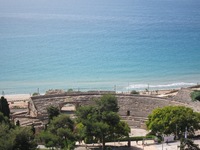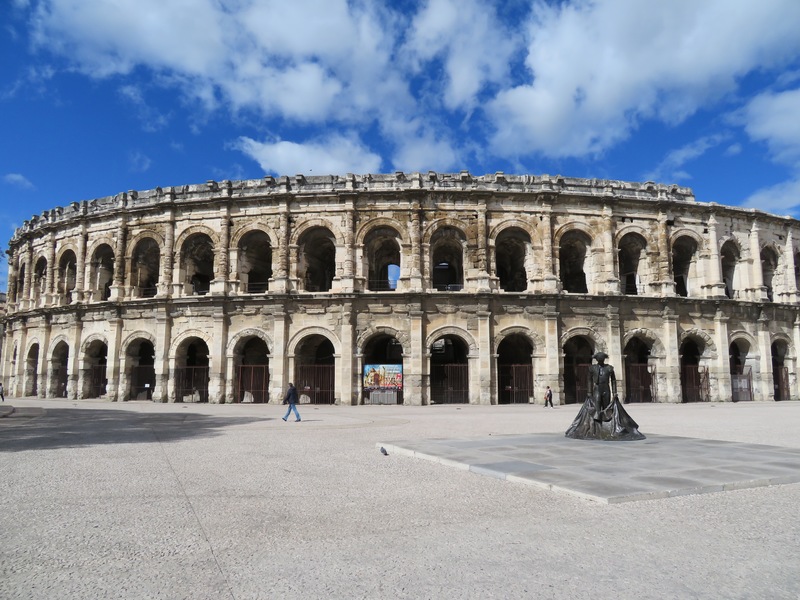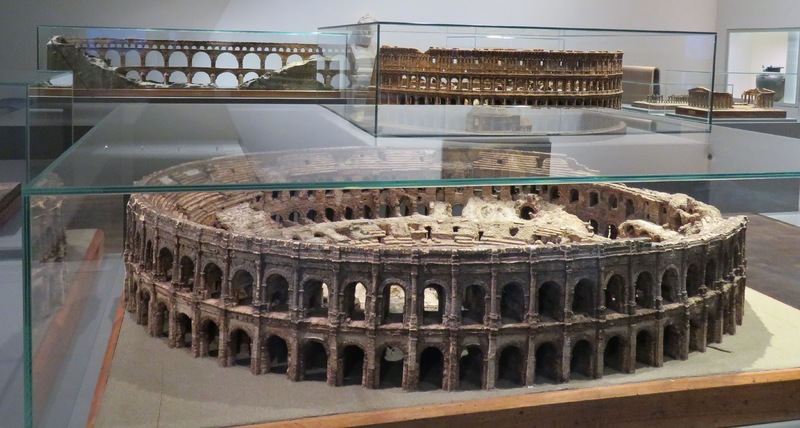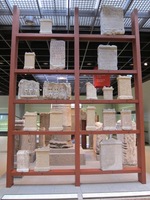User's Guide
Here you will find definitions of key terms used on the Omeka S platform and documentation of decisions I made for the metadata.
Quick Start
There are two ways to navigate this site. To read through the content pages, cllck on the menu icon in the upper right corner for the site index. To dive into the metadata, click on any image to reach related views and other resources.
Omeka S and Hyperlinks
Omeka S is an open-source platform for publishing collections and connecting them to online resources.
"The Daily" theme treats hyperlinks in an unusual way: the background behind the hyperlinked text is highlighted, rather than the text itself.
If you click through to an image's metadata, you will find that the theme visualizes hyperlinks differently on the "back pages," where sometimes highlighting occurs and sometimes it doesn't. If you hover your cursor over the text, however, it should change in response to any link present.
Key Omeka Terms
In Omeka, familiar words have slightly different meanings.
Item: Whatever is being cataloged.
Media: Images of that item. Media do not exist independently; they must be anchored by an item.
Item sets: Tags that connect the items.
Example: The "Amphitheater at Tarragona" is the item where you will find media and links related to that building. This item is part of the item sets "amphitheater" and "Tarragona." You can also click on the image below to see this information.
Key Cataloging Terms
I used a modified Dublin Core vocbaulary to define the metadata for each item. Here are some of the protocols I established for my unique data set.
Repository/Authority (Contributor): I use this field to designate the institution responsible for the work, either a museum or an archaeological authority. Official URLs can be found in this field. Dublin Core calls this field "contributor."
Location (Site/Findspot): I use this field to indicate the city where buildings still stand and where objects were found.
Identifier: I use this field for the inventory numbers of museum objects and links to dedicated pages in online catalogs.
Description: In addition to explaining unusual evidence, I use this field for unofficial URLs, such as those on Google Arts and Culture, which describe the work in question.
Relation: I use this field broadly to connect evidence that has become disaggregated. Sculptures, paintings, and mosaics that have been removed from a building are a good example. I also use it for buildings that stand next to each other and for views of multiple items.
References/Is Referenced By: I reserved these fields for modern representations, such as maps and architectural models. For example, the "Amphitheater at Nîmes" item is referenced by the "Cork Model of the Amphitheater at Nîmes" item, and vice versa. You can also click on the images below to see this information.
Special Cases
Museums: Typically, I cataloged each museum as an item and then cataloged each artifact as an item. When I cataloged artifacts, I linked to the cataloged museum in the "Repository" field. For most museums, I created consistent "Titles" in English, e.g. "The Archaeological Museum at Nîmes." I then put the actual name in the "Altnernate Title" and "Repository" fields, e.g. the "Musée de la Romanité." I did so for the benefit of students and the interested general public, so that languages would not be a barrier to exploration.
Replicas: This site has images of architectural models (in cork, plaster, and resin), as well as plaster sculptural casts and metallic replicas of artifacts. For such items, I made the mode of replication the "Type" and what was being replicated the "Subject." For example, the "Model of the Amphitheater at Nîmes" has "model" in the "Type" field, "amphitheater" in the "Subject" field, and "Amphitheater at Nîmes" in the "References" field.
Locations and the Pleiades Gazetteer: I created an item set for each city and placed a link to the Pleiades entry for that city in the item set's "Location" field. When I cataloged images of objects from or buildings in that city, I linked to the city item set in the "Location" field. That means that you will need to click through to the item set to find the link. However, if Pleiades also had an entry for an individual building being cataloged, I placed that link directly in the "Location" field, while I also linked to the item set for the city. Take a look another look at the Amphitheater at Tarragona to see how that works.
Searching
Omeka S offers a general search option: look for the magnifying glass icon in the upper right corner. This tool focuses only on the metadata of items. As an example, a search for "museum" will return every item that has that word in the metadata, even if the item itself is not a museum. Alternatively, "museum" is also the title of an item set, so clicking on that highlighted word in an item's metadata will return every item connected to that item set (e.g. all of the museums).
Some of the "back pages" offer an "advanced search" option, but this feature is not optimized for this site, and its use is not recommended.
Linked Data and Cataloging Priorities
In cataloging over a thousand research photographs, my first priority was linking out to Pleiades (see above), in order to be as specific as possible about locations. To be as specific as possible about objects, my second priority was linking out to museum catalogs, though I suspect that these links will be less stable over time (some even changed while I was cataloging). Due to time constraints, I have not yet prioritized linking to controlled vocabularies for historical eras, people, iconography, and media, though I recommend the Getty Vocabularies for that purpose.
Material directly related to the book is cataloged in greatest detail; tangential material is cataloged more lightly. For buildings with objects and explanatory panels displayed within them, I made an effort to catalog the most important objects and panels individually. When that was not possible due to time constraints, I occasionally uploaded bonus images of finds along with views of the building. For example, this is the case for the Köln Archaeological Museum, where the museum "item" includes some views of objects that I did not catalog individually, though I did individually catalog a number of objects from this museum.
Images and the CC BY-NC License
For convenience, all of my photographs have a CC BY-NC license, which generally means that you may use them for non-commercial purposes as long as you include the credit line "photograph by Kimberly Cassibry." You will need to click on an image a few times to reach the highest resolution, then you can right-click to save.
I hope that these photographs will be useful for papers, presentations, and teaching. Please use good judgment if you are looking for illustrations for publications. The CC BY-NC license applies to my photographs, not to the artifacts, buildings, and signs themselves. National copyright laws vary, and some museums and archaeological authorities restrict the right to illustrate their material. When in doubt, consult the CAA's fair use guidelines.
Acknowledgments
Wellesley College provides technical support and hosting for this site. I am especially grateful to Mackenzie Stewart for his help. At the college's Knapp Media and Technology Center, Jordan Tynes and Shane Cox scanned the objects illustrated on the Sketchfab page. My research assistent Kayla Kane helped with proofreading. At Michigan State University's LEADR Lab, Alice Lynn McMichael fielded my questions about Omeka and the Digital Humanities. All remaining mistakes are my own.
Contact
If you have questions or find mistakes, please let me know. My contact information can be found on my Wellesley College faculty profile.
How to Cite this Website
Model:
Kimberly Cassibry, "Destinations: [page name or item title]," [link], accessed [date].
Examples:
Kimberly Cassibry, "Destinations: Guide," https://wellesley-omeka-s.libraryhost.com/s/destinations-in-mind/page/Guide, accessed August 1, 2021.
Kimberly Cassibry, "Destinations: Amphitheater at Tarragona," https://wellesley-omeka-s.libraryhost.com/s/destinations-in-mind/item/1598, accessed August 1, 2021.



